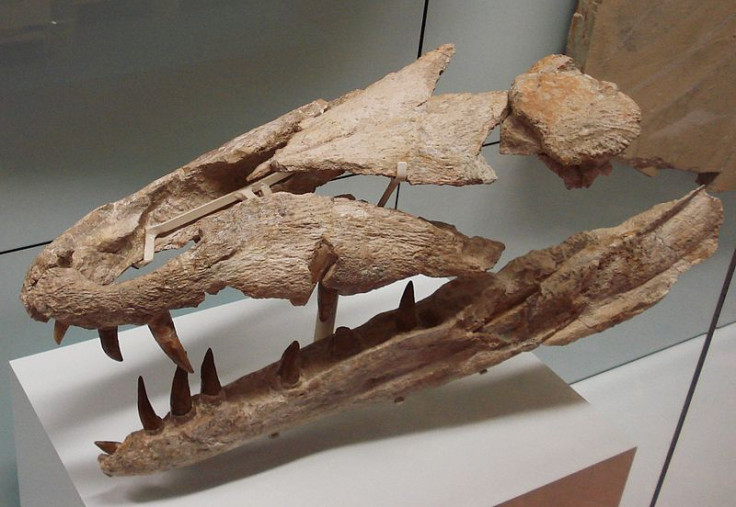Dakosaurus Maximus: 150-Million-Year-Old 'Largest in UK' Tooth Fossil of Extinct Sea Predator Found

A fossilised tooth of an ancient sea predator believed to be the "largest of its kind" has been found off the British coast.
Researchers discovered the 5.5cm tooth belonging to a prehistoric relative of modern crocodiles, known as Dakosaurus maximus.
The fossil was dredged from the sea floor near Chesil Beach in Dorset. Researchers and curators from the University of Edinburgh and the Natural History Museum identified the object after it was bought at an online auction by a fossil collector around a year ago.
Dr Mark Young, from the university's School of Biological Sciences, told the Times: "Given its size, Dakosaurus had very large teeth. However, it wasn't the top marine predator of its time, and would have swum alongside other larger marine reptiles, making the shallow seas of the Late Jurassic period exceptionally dangerous."
The tooth, which has a broken tip, is now in the fossil collection of the Natural History Museum.
Dakosaurus maximus lived during the Late Jurassic period and was a carnivore with large, serrated teeth. Meaning "biter lizard", the creature is named after its powerful bite enabled by its large adductor muscles that would have helped rip prey apart.
Dakosaurus maximus grew to around 4.5 metres in length and swam in the shallow seas that covered Europe 152 million years ago, according to t he team's research published in the scientific journal Historical Biology.
The shape of its skull and teeth suggest it ate similar prey to killer whales, using its broad, short jaws to swallow fish whole and to bite chunks from larger prey.
The Dorset and East Devon Coast World Heritage Site, known as the Jurassic Coast, has rocks recording 185 million years of the Earth's history. According to Jurassiccoast.org, it gained World Heritage status because of the area's insight into geology spanning the Triassic, Jurassic and Cretaceous periods.
Fossils are frequently found on this stretch of coastline as Jurassic clays formed in a deep tropical sea, the soft muddy bottom of which was often stagnant. This created a sulphurous and anoxic environment (low oxygen levels), which are ideal conditions for preserving shells, bones and the soft tissue of extinct prehistoric creatures.
© Copyright IBTimes 2025. All rights reserved.






















